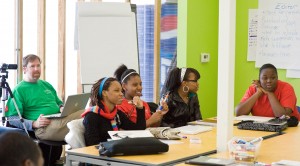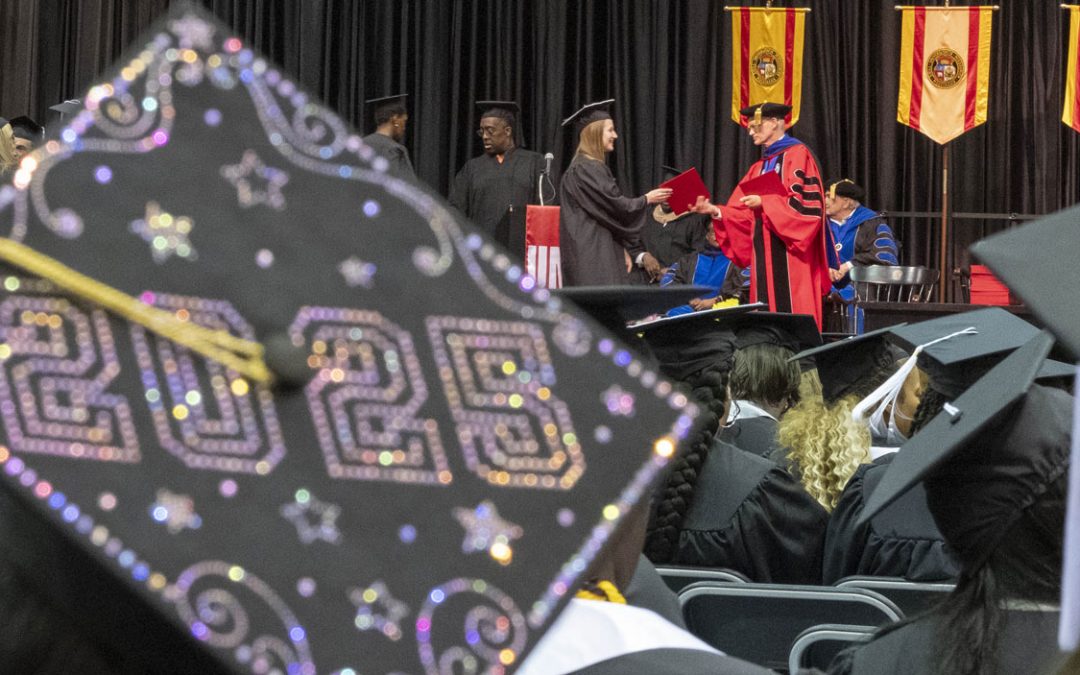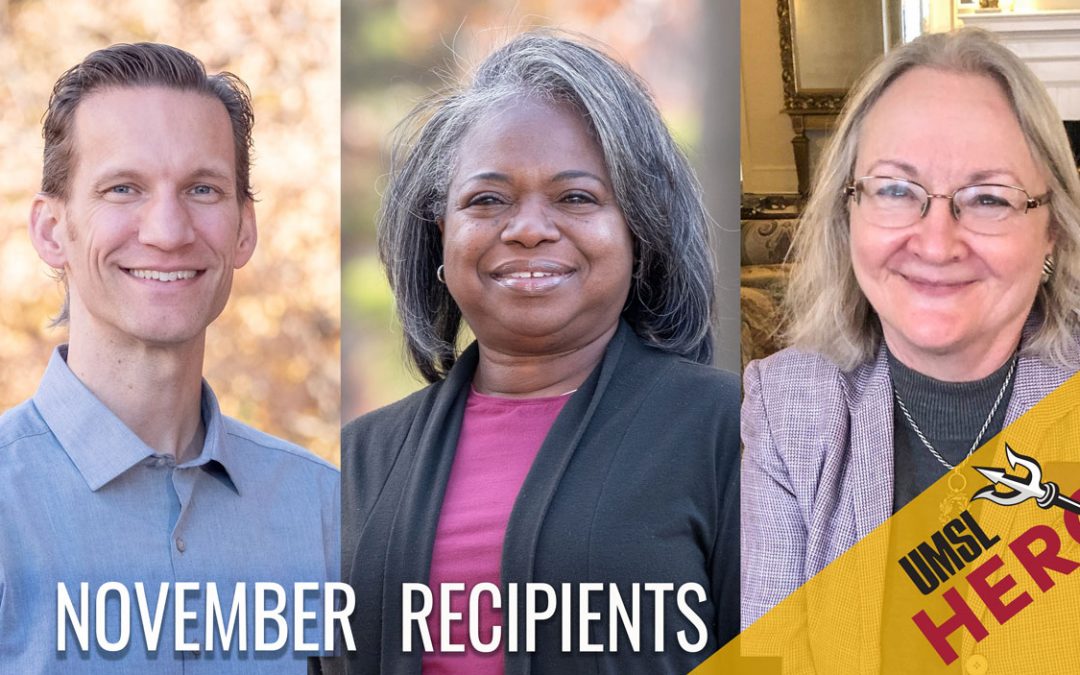
Students gather Saturday morning at the Taylor Building in St. Louis to review accuracy and fact checking tips. They are part of the SciJourn program at UMSL in which students learn about science by becoming journalists. Pictured are: UMSL scholar Joseph Polman (back), Desire'e Redus, Jerricka Cotton, Daisionara Gurley and Adeola Adewale
Creating a lifetime connection to science is one of the goals of an innovative new grant program under way at the University of Missouri-St. Louis, which is training high school teachers and students to become science journalists.
The Science Literacy through Science Journalism (SciJourn) project is a four-year, $3.5 million National Science Foundation grant administered through UMSL’s College of Education, in collaboration with the Saint Louis Science Center and Normandy (Missouri) School District.
Through the project, UMSL faculty train enlisted teachers from school districts throughout the St. Louis area to incorporate the SciJourn project into their daily curriculum. Participating classes then become a newsroom, in which students select stories, conduct interviews, do research, check sources and write articles that are edited and posted on the online newspaper, SciJourner.
In addition, students participating in the Saint Louis Science Center’s Youth Exploring Science program have established a permanent SciJourn newsroom. Eventually the researchers expect that over 1,000 area high school students will have a chance to write a science news article.
Joseph Polman, associate professor of teaching and learning at UMSL, is the principal investigator on the grant. Polman said the project is allowing teachers to give students a new understanding of science by allowing them to relate it to their lives.
“We are developing and researching how to educate scientifically literate citizens in a way that has never been done before,” Polman said. “The expert thinking of good journalists is a very promising model for how a scientifically literate citizen should think in a world where science and technology information routinely impacts important individual and societal decisions, but most other research in science education focuses on helping students learn to think and act like scientists. Although the latter is important and useful, most adults spend a lot more time trying to make sense of secondary science information to make decisions, not ‘doing science’ per se.”
The grant’s co-principal investigators are: Wendy Saul, the Dr. Allen B. and Helen S. Shopmaker Endowed Professor of Education in Collaboration with Springboard to Learning at UMSL; Alan Newman, research professor in teaching and learning at UMSL; and Cathy Farrar, chair of the science department at Normandy (Missouri) High School and UMSL doctoral student in teaching and learning.
Newman said the project, which began last year, is making students consider their sources.
“Students are thinking a lot more about their sources of the information,” he said. “They throw around the words ‘credibility’ and ‘attribution’ more than most teenagers. They also appear to discuss more regularly how science and technology are relevant to their own, their peers’ and their families’ lives.”
Angela Kohnen, who teaches English at Incarnate Word Academy in Normandy, Mo., said she’s seen a positive change in her students since they started the project. Kohnen said at first her students questioned why they were working on science stories in an English class, but once the class began the SciJourn project, opinions changed.
“They are now curious and excited about learning,” she said. “They now understand that science is everywhere and that things that affect them, their friends and family, can always relate back to science.”
Visit http://www.scijourn.org for more information on the SciJourn project and participating schools, as well as how teachers can become part of the project.














